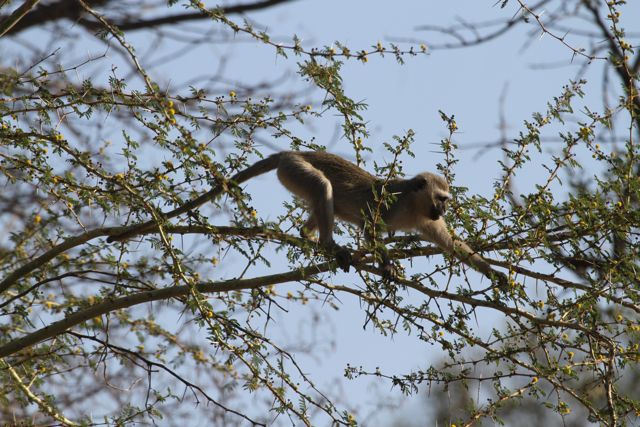Given that we have reduced elephant habitat to tracts of land that cannot be used for agriculture - either arable or livestock; generally speaking of course. Most of the game reserves where elephants are allowed to live today are in semi desert terrain and often on international borders; Given the choice, elephants prefer to eat grass, but in these areas, grass is often a very seasonal commodity, so for the rest of the year they make do with the rough bark of hardwood trees. This often makes them unpopular with people who love trees - but elephants need to eat something after all.
And woebetide the elephant if he happens to stray out of his designated area in search of something more palatable to eat, or cleaner fresher water. He instantly becomes labelled a 'rogue' elephant; or a 'rampaging' elephant - none of which he truly understands, but makes his reception very hostile and is usually life threatening.His life could depend on semantics in this way.
However, from a non scientific standpoint and in defense of elephants, what some see as destruction, is often a very vital contribution to the health of their environment. First of all they have a very vast digestion, and their droppings are muffin shaped balls of instant manure. The seeds they eat receive the required heat treatment in their journey through the elephants digestive system, to enable them to germinate successfully on return to the ground.
Elephants pull down branches of leaves from tall trees, in order to browse the furthest leaves. This enables smaller browse dependent species to access food sources even during the driest months.
Young elephants strip the bark from trees, often ring barking them, during seasons when the sap is rising. This could be seen as a bad thing, as the tree usually dies. But it creates clearings in a forest, and prevents the forest from becoming too dense. it also creates habitats for birds and insects, and small tree dwelling animals. Not to mention firewood for human campfires.
Big bull elephants push down trees. Sometimes this is interpreted as a show of strength, or a feeding requirement; but it also has the benefits of making fresh leaves available to smaller browse dependent animals; it creates habitat for ground birds and small predators, and often assists with preventing soil erosion. Have you noticed how often the tree happens to fall across a bush road?
Elephants make wide clear paths that meander through their range, linking waterholes. If you are lost and thirsty, follow an elephant path to water - but keep your eyes and ears open!
A herd of elephants make less noise travelling through a forest, than one or two people.
At a river crossing, we once saw fish using the underwater elephant tracks as nesting sites. Each round indentation had a resident parent fish guarding their eggs.
I am sure there are a million more ways that elephants contribute to environmental health within their range states, but these are the first few that spring to mind. I also know it is extremely good for our heart and soul to spend time with elephants when they are relaxed and feeding or travelling on long ancient paths.
Of all footprints
That of the elephant is supreme.
Of all mindfulness meditations
That on death is supreme.
— The Buddha
That of the elephant is supreme.
Of all mindfulness meditations
That on death is supreme.
— The Buddha













